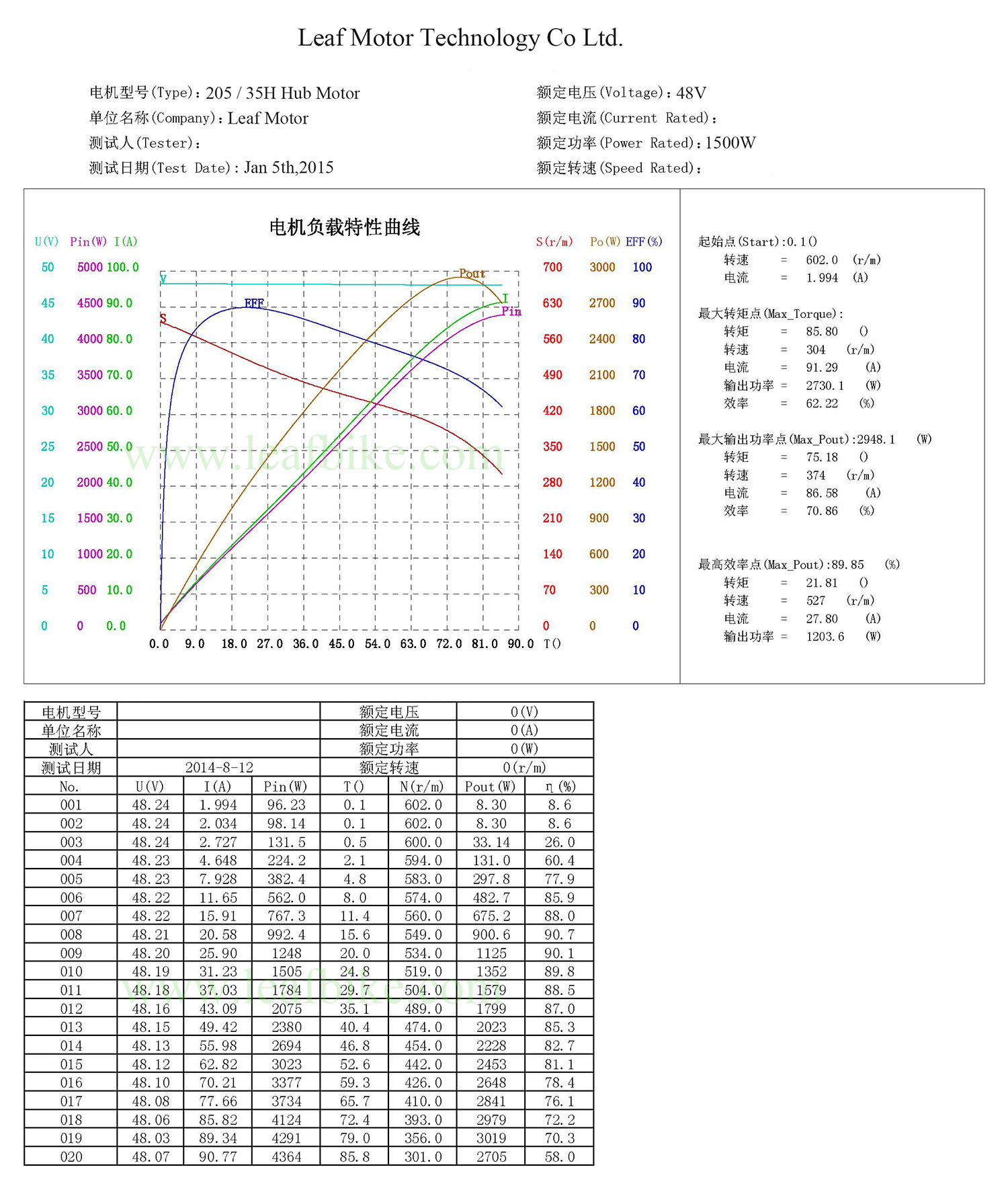Thinner laminations = less eddy current = less heat generated per watt inputted because the motor is spending less of the inputted power fighting itself.
The higher the RPM, the more eddy current.. so you can spin up this motor without taking as big of a penalty as you do with a 0.5mm lamination motor. But just think of the efficiency of motors like these. 80% vs. 90% means that the 90% efficient motor is generating half of the heat as the 80% efficient motor, literally. Your saturation point and continuous wattage handling for the same design changes in your favor.
As for my 72v test, the motor wanted to do 60mph and would sip 5,500w-6,000w or so while achieving 50mph up a hill, but the hills i tested were short compared to my route. On a much higher turn count on the same voltage, it will do.. what.. 35mph? and only sip maybe 3,000w going up the same hill.
The heat generated by doing a low turn count motor on the same voltage doing the same thing is gonna be MUCH lower. So is the speed.
And my tests were done at about 65F, and i went up relatively short, but very steep hills. When it hit 80F-90F here in Utah, the situation with the motor staying cool changed very quickly. Also, i started using 120% mode almost everywhere. End result is that i average 3000W+ for long periods of time, climbing long hills repeatedly on the way home. These are 20+ mile rides where i am totally flogging the motor about 75% of the time. Of course it's reaching the critical heat point.
But where i live is very demanding. I ran a MAC 8T on 36v for 4 years everywhere else i lived, and got away with it.. nowadays, i live about 500ft. higher than downtown and about 15 miles away. Most of my route has almost no bike lanes and speed limits of 40-45mph on the road. You should only worry about what i'm saying if you have my conditions.
Let's revisit the dyno sheet, shall we? because we know that this is indicative of what happens in real life, so it's useful data:
30mph = 1000W input point ( ~90.5% efficient ).
40mph = 2000W input point ( ~88% efficient ).
45mph = 3000W input point ( ~81.3% efficient ).
Now, add a big, long hill to any of these figures and your efficiency is gonna go way down. Add high levels of ambient heat, and your air-cooling is also going to be less effective. That heat that i build up while flogging the motor is dissipated at a slower rate.
A crystalyte 35mm motor would be producing basically double the heat, just because of the laminations. It could not survive this torture in the slightest. That's why anyone who buys one today is kind of a fool to be honest



